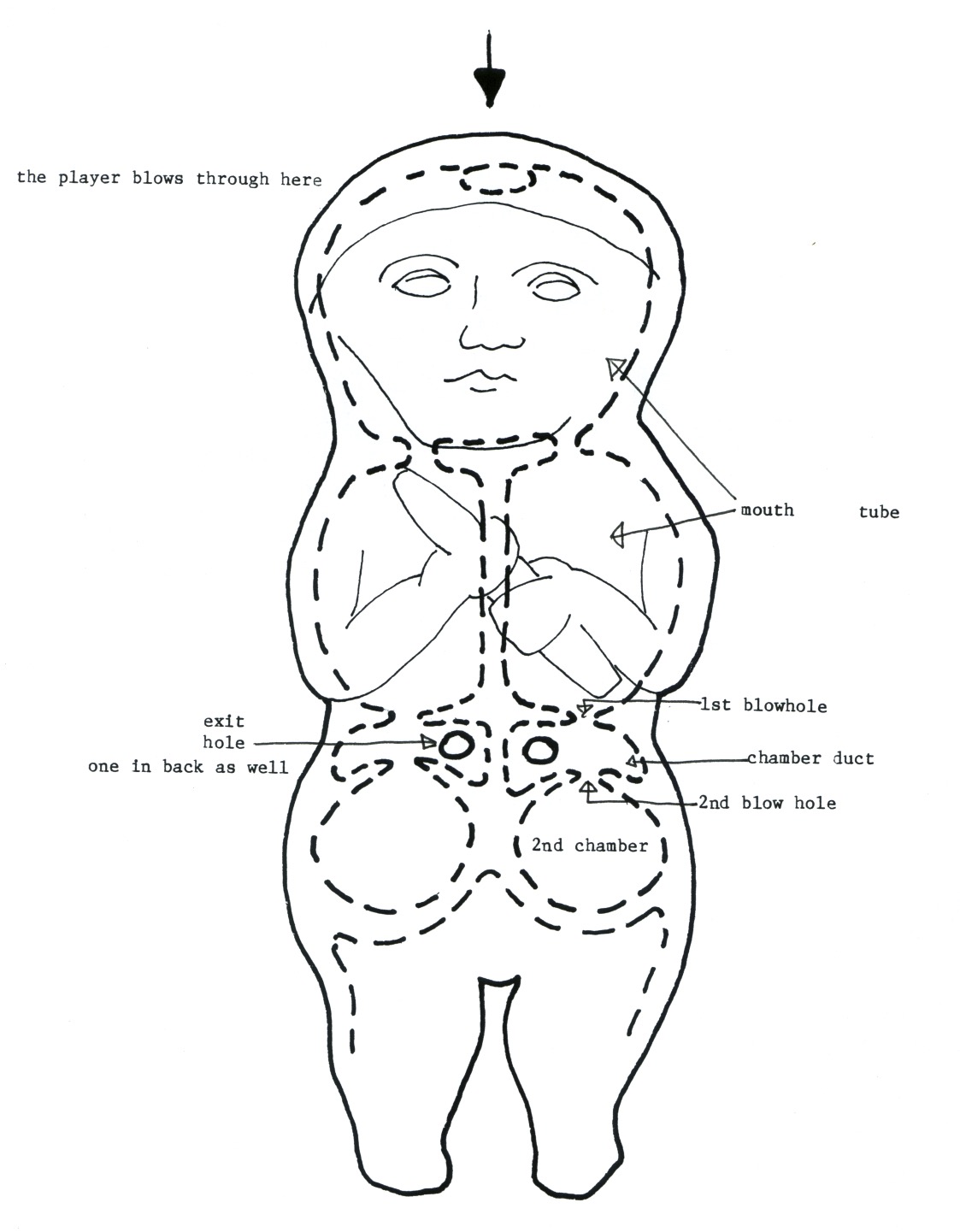Nayarit, Ixtlan del Rio, 0-AD 400 couple singing.
Orient-Archäologie Band 22, Studien zur Musikarchäologie VI; Both, Eichmann, Hickmann, & Koch, Eds.; VML, Rahden/Westf. Leidorf, 2008, Germany
This article consists of photos, recorded samples, discussions, and sonograms of six double prehispanic flutes, plus a Rawcliffe double flute inspired by prehispanic concepts. Air pressure variations allow for increased performance possibilities through manipulation of intervals and difference tones on double flutes with fingerholes, and on double whistles, are the only available performance variable. The manipulation of air pressure to adjust timbre, intervals and difference tones on some prehispanic flutes was surely more important than tonal range or potential melodies. Many high pitched double flutes are found in the organology of prehispanic flutes across many cultures. They frequently produce strong heterodyne/difference tones; these tones can be disorienting, deafening and entrancing. Both beats and heterodyne tones arise through an interaction between two source tones. Beats are a result of two tones of slightly different frequencies and similar amplitude levels being played together. The sonograms of these double flutes show lines that seem to represent combination tones; these tones probably have a physical presence in the air, not just in our ears. These tones can be produced either within the head, through a non- linear response of the basilar membrane of the ear or auditory cortex, or externally through an interaction between two proximal sound sources such as presumably, the adjacent mouthpieces of these double flutes. Perhaps, when listening to difference tones, we are hearing what was once, in the prehispanic world, the voice of a deity.


